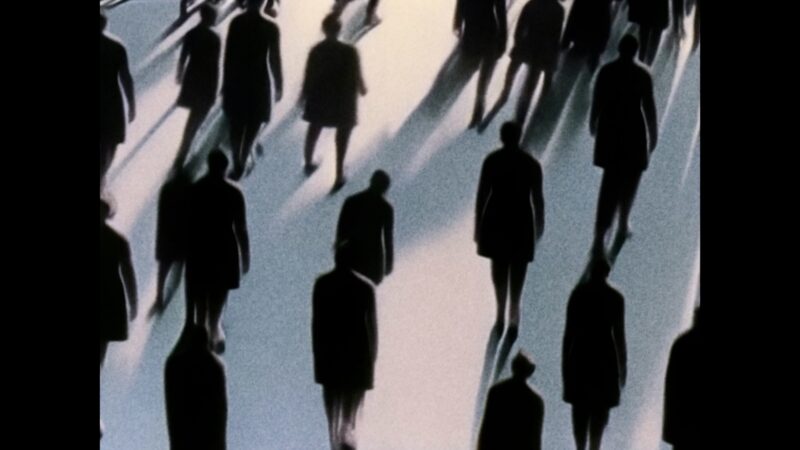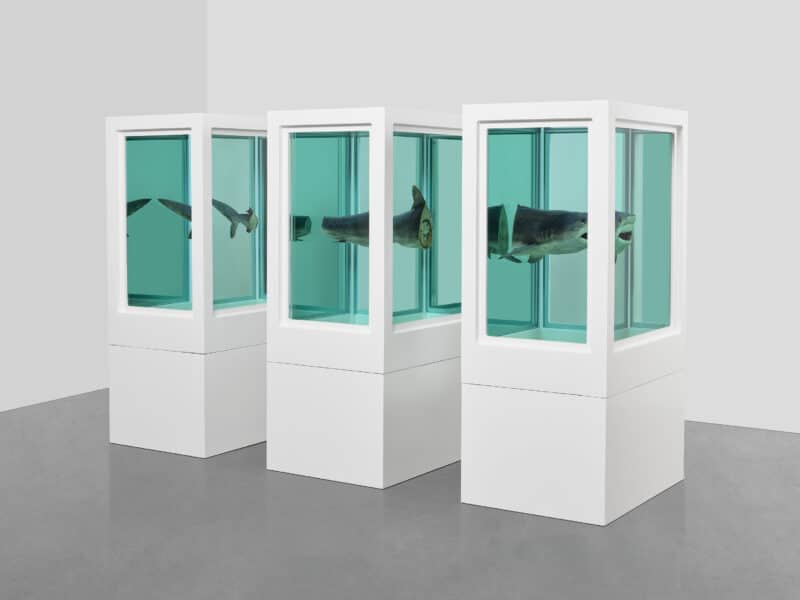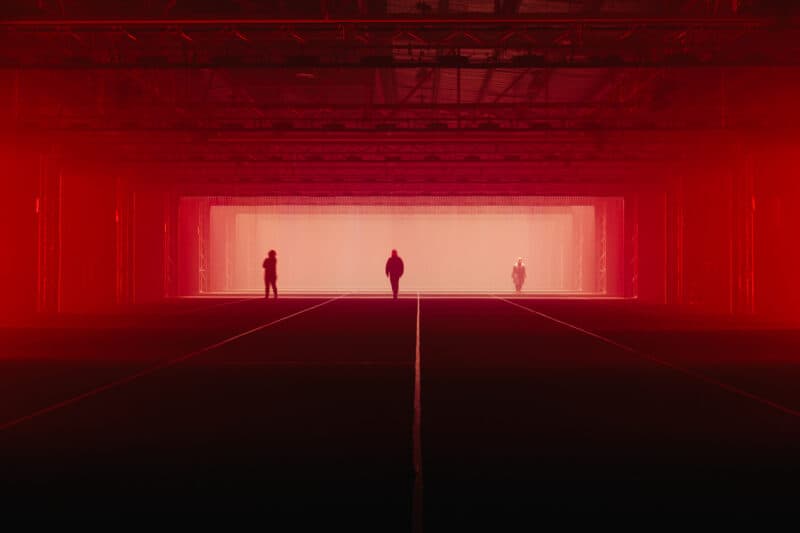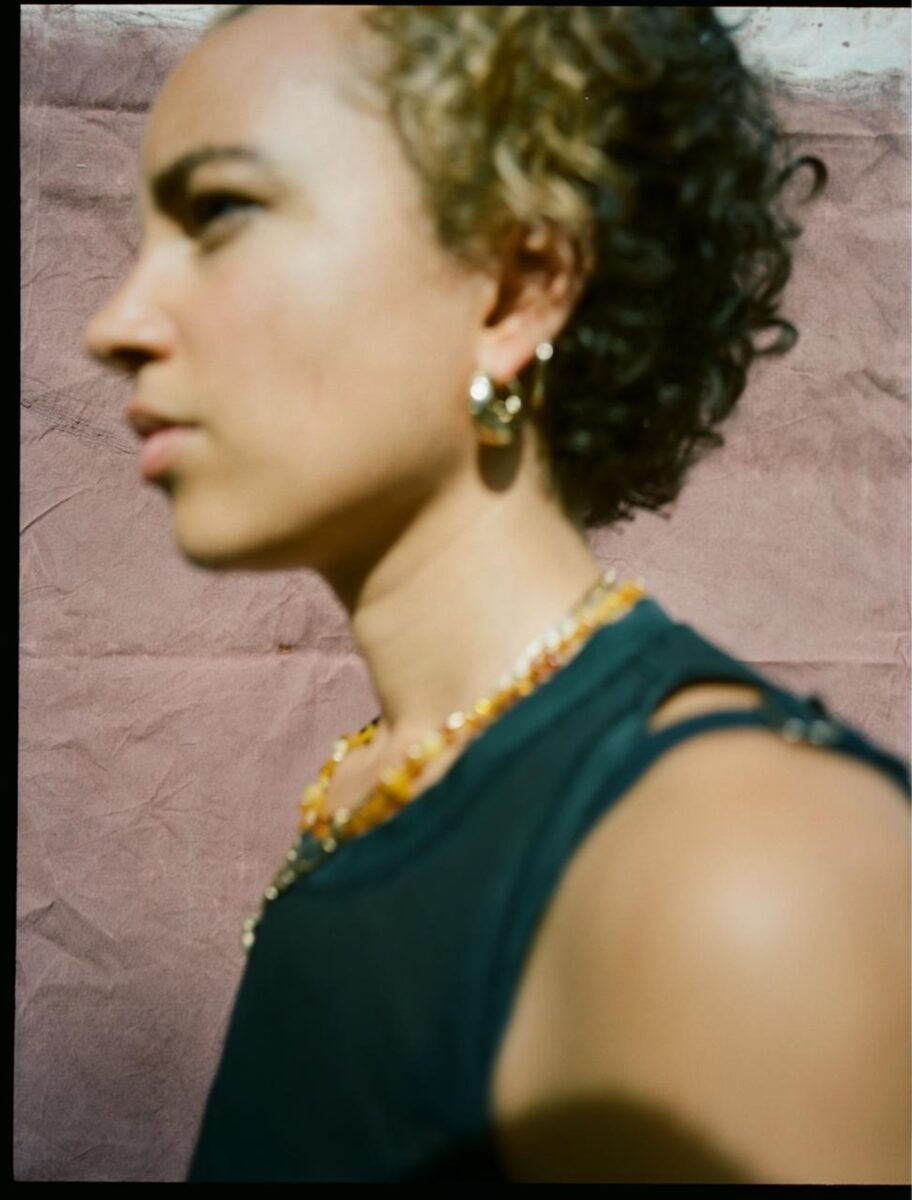
Multimedia artist Phoebe Collings-James is driven by intuition, as well as the movements of their body and bodies at large, to create sculpture, painting, sound, video, and performance art. Collings-James uses their entire body and lived experiences in the creation of their art. Through the molding of clay, the strokes of a paint brunch, or the spoken words of a poem, she embeds herself into objects and rooms that carry on a collective curiosity about and scrutiny of language, hostility and violence, womanhood, race, and identity.
To experience Collings-James’ art is to tune into a specific frequency. Her work is not a casual encounter, it requires attention and is successful in grabbing hold of it. Her ceramics command respect with their seemingly precarious placements, carefully inscribed words and phrases, glossy glazes, and irregular angles, all of which represent different personalities and narratives and are emblematic of human and other animal forms.
Collings-James grew up in East London and attended Goldsmiths, University of London. She has participated in the Nuove Ceramic Residency in Italy and the Archie Bray Foundation in Montana. In 2018, Collings-James launched Mudbelly, a ceramic studio based in London. Mudbelly Teaches provides courses for Black people taught by Black ceramicists. She is also a member of Black Obsidian Sound System (B.O.S.S.) a community of queer, trans, and non-binary black and people of color involved in art, sound, and radical activism.
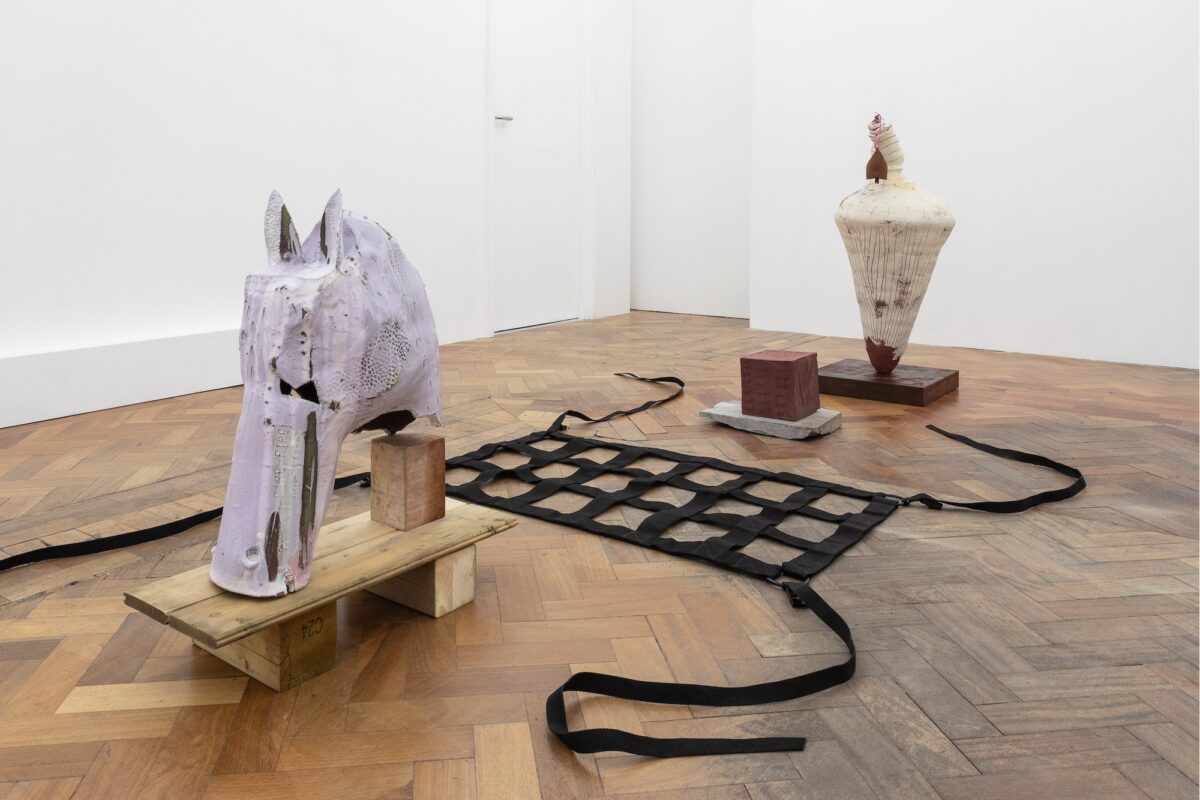
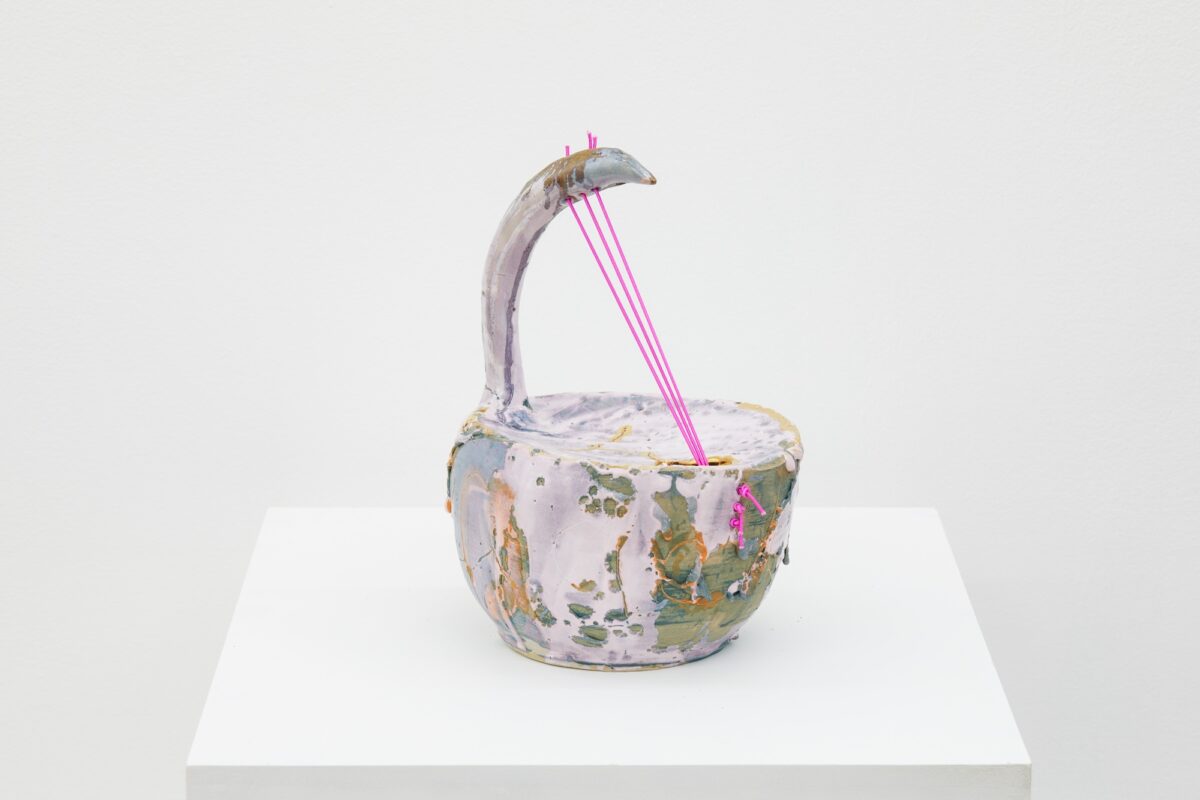
Their artwork has been featured internationally at institutions such as Cookie Butcher Gallery in Antwerp; Studio Museum in Harlem, New York; 60th Venice Biennale; Getty Museum, Los Angeles; Sonic Acts, Amsterdam; 315 Gallery, New York; Kunsthalle Düsseldorf, Germany; Palais de Tokyo, Paris; Picture Room, New York; Arcadia Missa, London; Camden Art Centre, London; and most recently, the SculptureCenter, New York.
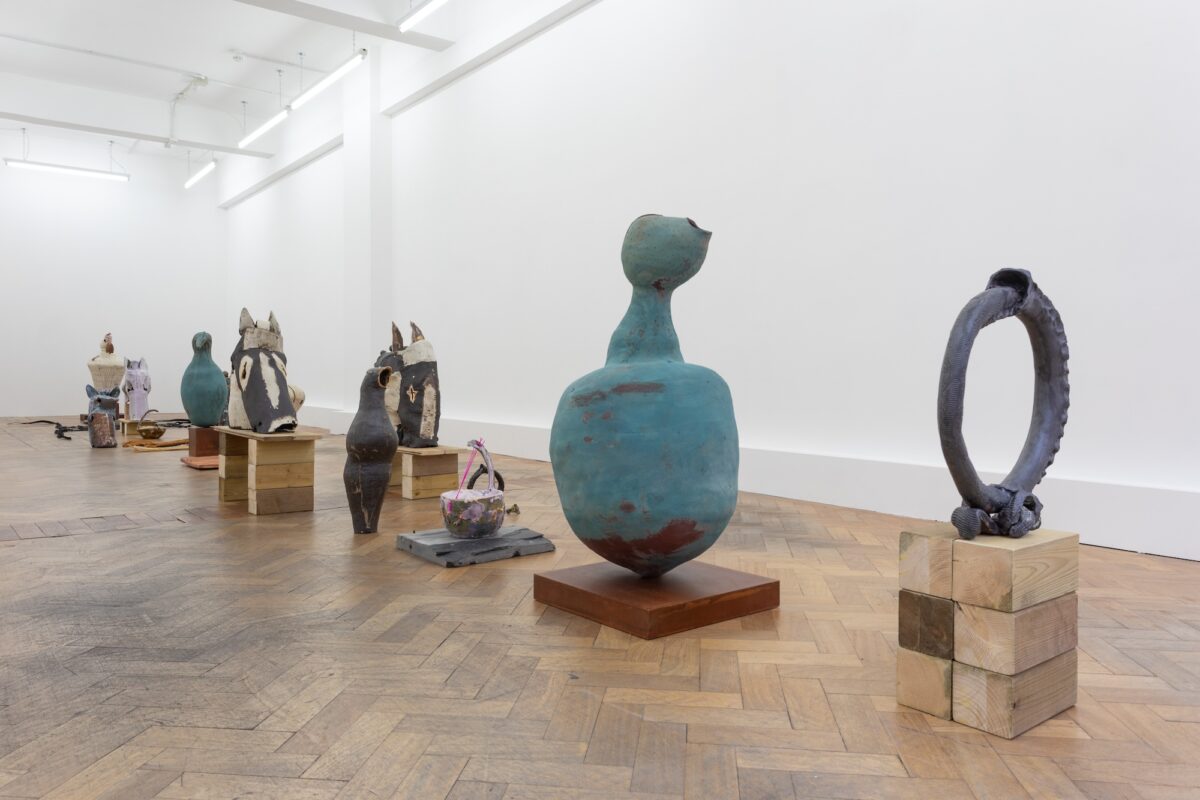
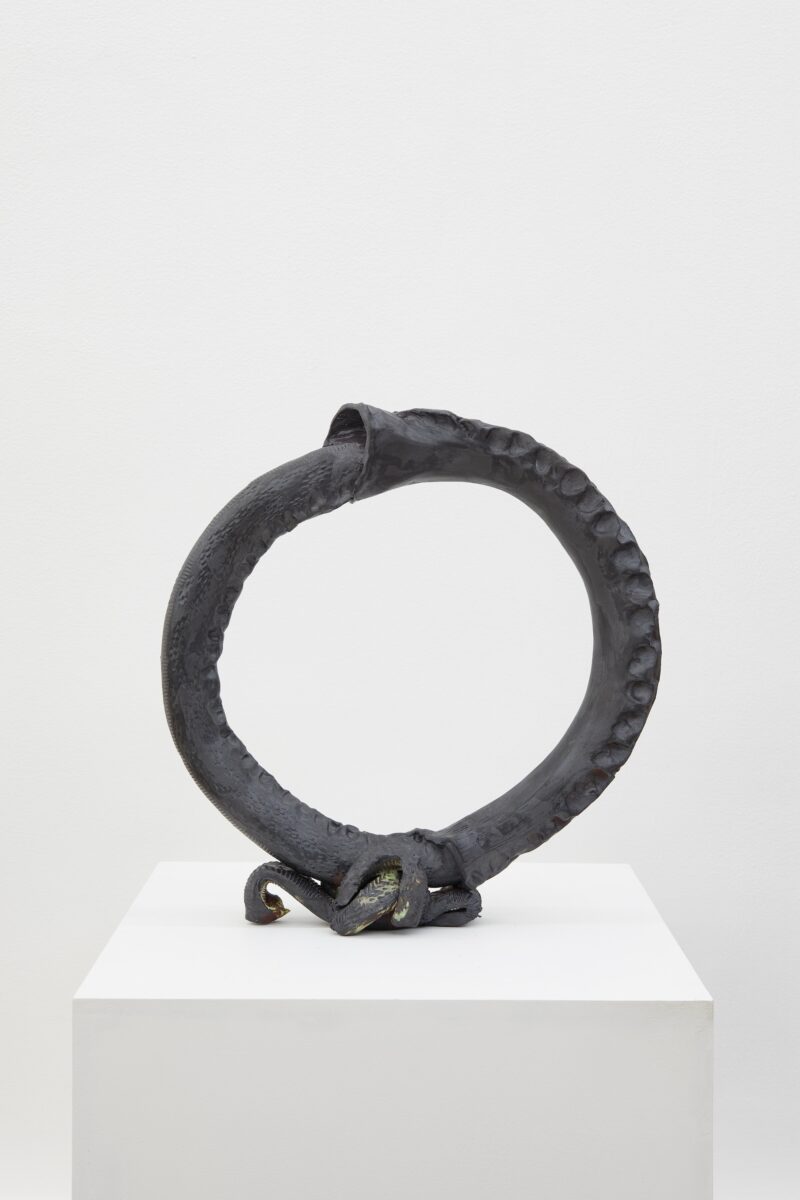
Collings-James currently lives and works in London. They are represented by Arcadia Missa in London and currently have work in the exhibition In and Out of Place. Land after Information 1992 – 2024 at Kunstverein in Hamburg; Germany.
Phillip Edward Spradley: I imagine you had a very early cognitive understanding of science, nature, music, and magic. The home you grew up in had a dark room, a garden, and music constantly playing, all of which is early-stage learning for the introduction to arts. How did the access to these spaces inform your artistic path?
Phoebe Collings-James: It gave me the confidence to understand art as a vital part of life. The things you describe I now understand to be part of what lit me up and nurtured me as an artist but they also came in a partially concrete, run down form that is common to city life. Life grows between the cracks… So in that sense it informs my intuition for art now, in that it does not rely on existing or being produced elsewhere, as much as I enjoy playing in gallery spaces – mostly art exists outside them.
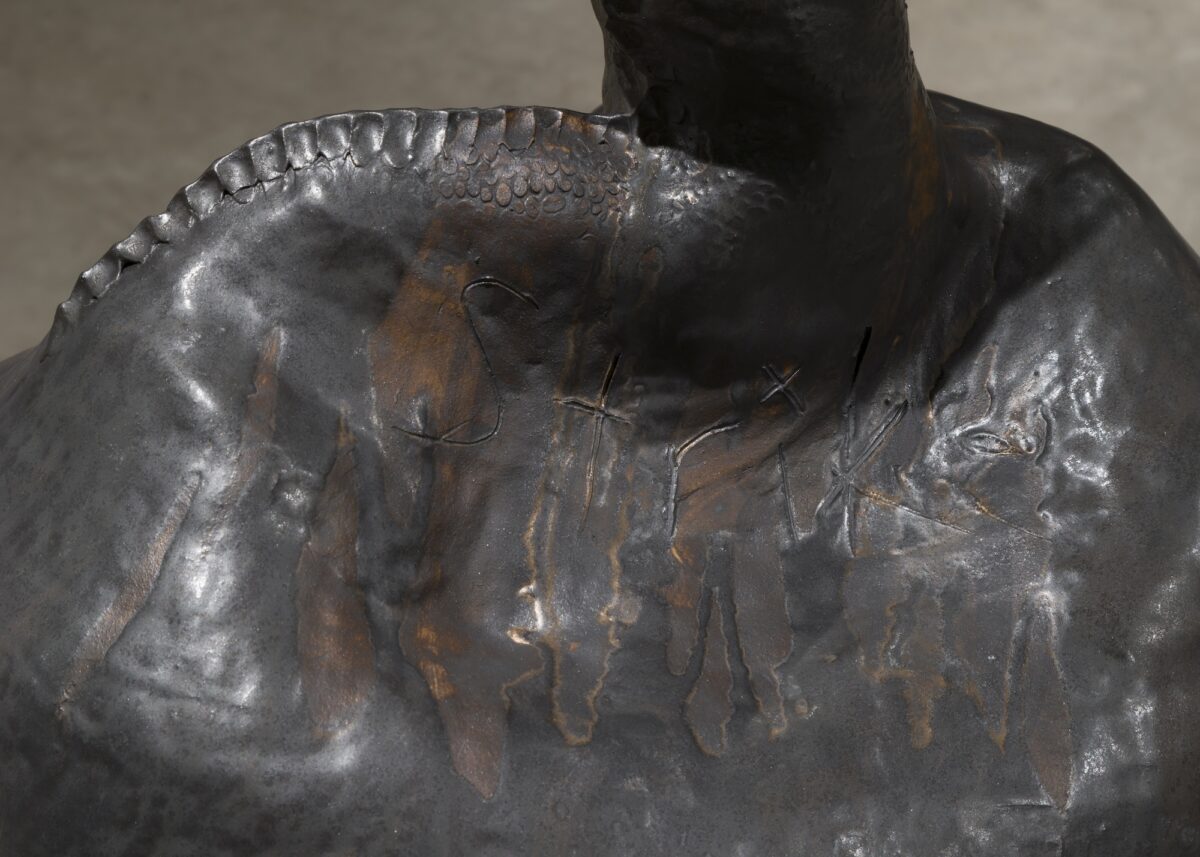
You recently had your first US institutional exhibition at the SculptureCenter in New York. Can you speak on this new series of artwork, Infidels, its connection to ceramics, and perhaps how this series is similar or different from previous explorations?
This work rises from the ancient connections of ceramics – fired earth, to Babylon, the first metropolis that was built from it. I speak about the infidel figure in relation to the voice, to incendiary speech, to outsider-insider-ness as well as dogmatic traditions. If it is possible to articulate visually the internal life of my body, the throbbing organs, neurological pathways and thoughts, this is what I am attempting with these works. I haven’t thought about it until now but in some sense they are also portraits. The Infidels are a continuation of a series that was part of my show at Arcadia Missa last year, bun babylon; a heretics anthology. That show presented 6 archetypes, the five other’s being the guardian, dreamer, silo, cypher, preacher. Here I was able to go deeper thinking around the infidel. In doing so I was able to consider the form, precariously erect on round bases, and also the glazing techniques as I was studying on a glaze chemistry course during the making which allowed me to synthesize the conceptual ideas of socially ambling, political individuals, with the chemistry of rocks and minerals which also share much of our bodies materiality.

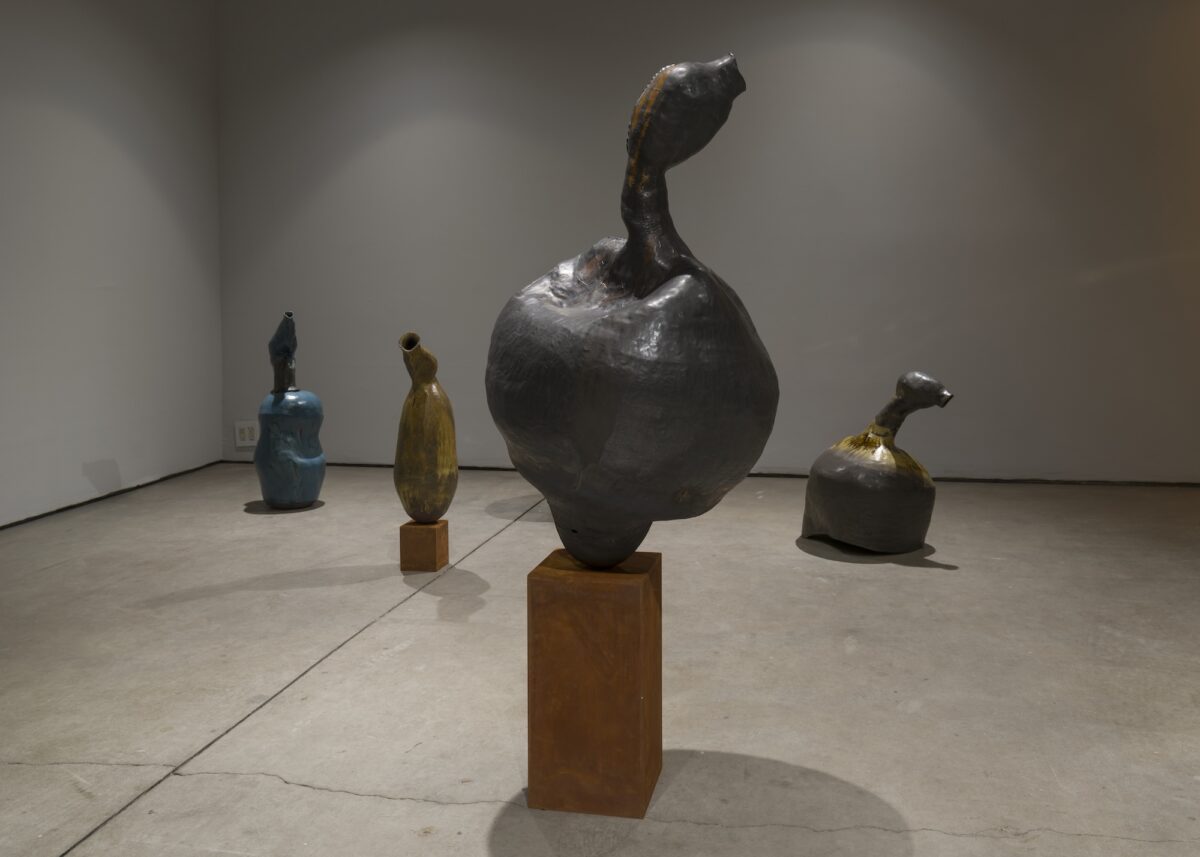
The placement and the forms of the sculptures resembled a choir. Though they differed in size, height, and glaze, they stood in unison and came together to express the same message. You have a strong relationship with music, can you speak on your interest between sounds and objects? Do most of your sculptures emit a sound — if not loudly, then silently?
We are sounding objects! And part of wanting my sculptures to come to life in a space is considering them as sounding objects too. Because I also work with music it takes some restraint not to include it in every room, but I do also want to leave space for a viewer’s sensory imagination. And the reaction is varied, some people experience the space as being very vocal both spiritually and sonically, and others really just don’t… and I think that speaks to what each of us brings into a space like a gallery and how we tune in. There is of course also the gesturing of mouths and throats in these works which explicitly connect to an illumination of speech, breath that is evacuated through screeching and yelling. Demanding or calling out. It was important to me that they were moving as one forceful motley crew.
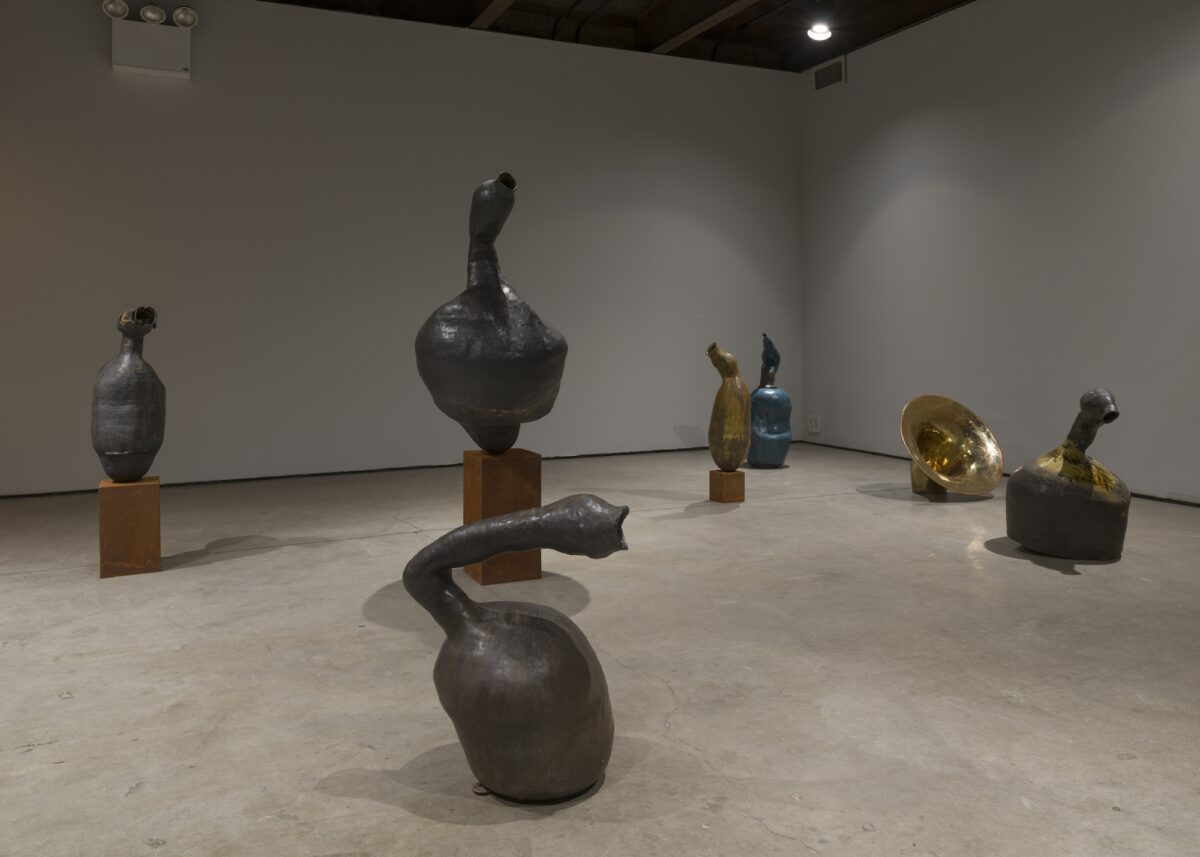
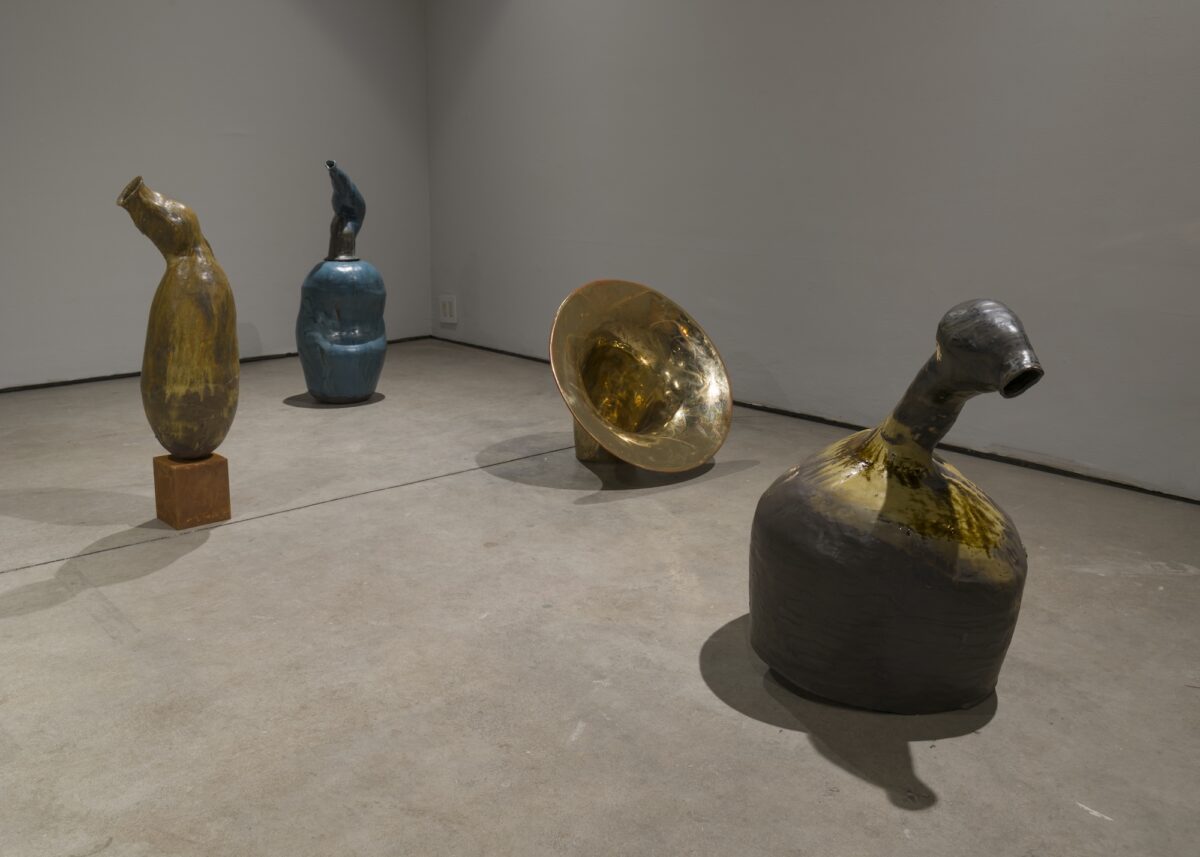
Your artwork is constantly bridging images with the written word. You have collaborated with poets and continue to be inspired by them. For example, the sculpture The Infidel is an ode to the late Benjamin Zephaniah. Can you share a little about your connection between clay and poetry?
Do you know what I don’t think I actually said that they are an ode to him, (did I?) but it is not untrue. He is a formative voice, face, heart for me and definitely part of my earliest political consciousness. He connects to the infidels because of his lyrical voice, because of not being afraid to be in an outsider position when needed, even or especially within his own communities. I am reading Barbara Hepworth’s biography at the moment, she speaks a lot about the political in abstraction, how her own anti-fascist and socialist politics are integrally wrapped into the gestural decisions for her sculptures. I note that because it is something I think about often, are my words and intentions for this work doing far more than the work itself? Many of the artists I admire working with the politics of abstraction speak of it’s ability to hold many ideas, while also being a wash with form, colour, and controversially in Hepworths case, the outlines of figuration. I think it is possible and it speaks to the fullness of what artworks and artists can offer, portals to understanding, sites for contemplation and imagining. Perhaps connecting to the concept of finishing also – being the moment a work has come to life. For me it is vital that my work can be felt and understood before any reading happens. I love writing and my notes are further threads but I hope that people are able to pull out some of their own first. Poetry is a different way of having a conversation, as is sculpture. It allows me to present tangling ideas to myself or simple thoughts, and work within their resonance. And as it comes back to music, melody and lyrics can do the same, it is a space for listening.
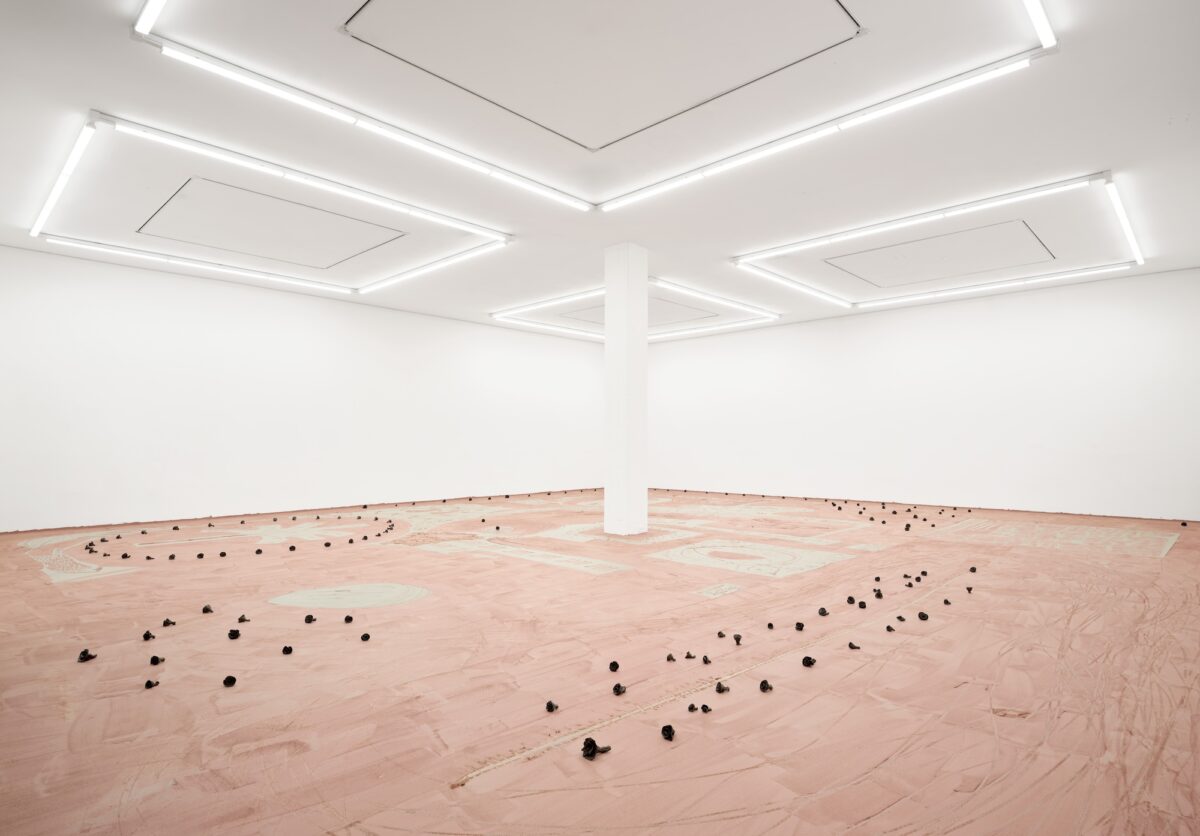
Your recent exhibition at Kunstverein in Hamburg involves direct participation from visitors. People must walk on a floor that is covered dried clayed. Participation causes the drawings and writings on the floor to transform, the space becomes fluid, it becomes a different landscape for each person who visits.
The title of this site-specific work, red earth, blood earth, blood brother earth [kick dirt], is a line from a long poem Notebook of a Return to the Native Land by Aimé Césaire. The poem was an anthem for Black people as it explores several profound themes, colonialism and identity, displacement and belonging, nature and spirituality, as well as love and humanity.
How do these themes intertwine with your artwork to create a rich tapestry that reflects your deep engagement with identity and the broader experiences of colonized nations and historical trauma?
As with much of my work with clay the material and execution of ideas run in tandem. I covered the Kunstverein floor in a layer of red iron-rich clay, which has dried and in the process of drying I worked into it words, marks and drawings – a sgraffito technique on a large scale. This surface is one that I usually find in my studio incidentally, traces of clay left over on the tables and wooden batts. With the provocation of thinking about land and being in such a haunted city as Hamburg, I wanted to consider the vast space as a landscape itself. I wanted it to be a poem that you could move across, with some of the energy of the works namesake title. The title has the addendum of [kick dirt] because I am aware of the re-visiting of figures like Cesaire, artists of each generation return to their works and feel resonance because so little has changed despite the world looking very different technologically. Kick dirt as a contribution to fuck it up, let the dust rise. It was also a chance within the drawings and text to name people I love, who have helped me move artistically like Beverly Buchanan’s house, semi rhetorical questions ‘Die welt ist schöen?’, name Palestine, Haiti, Sudan and Congo, lay a rose for them, draw an olive tree, repeat the formula for red iron oxide Fe?O?… and so on. Inculcate the red earth, blood earth, blood brother earth. As Cesaire in the poem repeats the tender line ‘at the end of the small hours’.
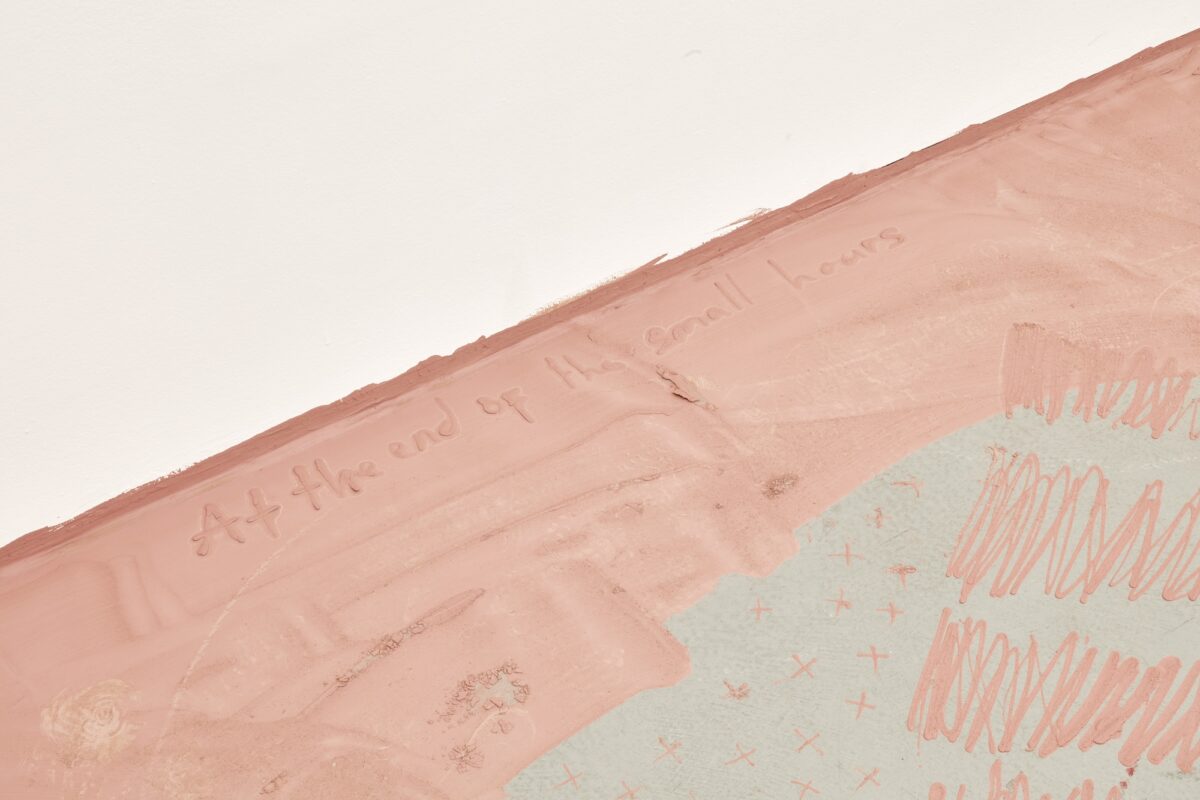
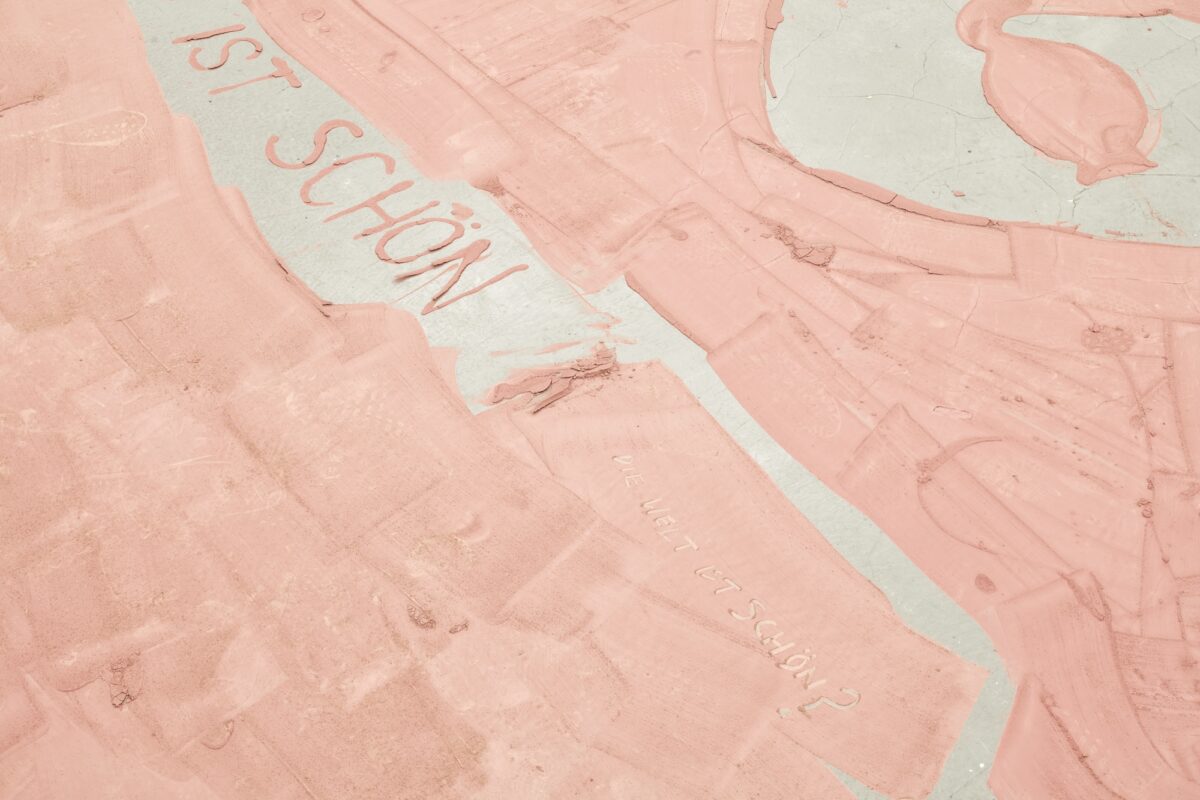
The clay flowers in the exhibition hold deep significance, serving as poignant symbols of remembrance and reverence. Much like cut flowers laid as memorials, these clay representations evoke the fragility of life and the beauty of the connections we share with those we’ve lost.
By using clay, an enduring medium, the flowers transform the transient nature of real blooms into something more permanent, suggesting that memories can be preserved even as life continues to change.
Can you elaborate on their placement throughout the exhibition and how they create a space for reflection and mourning?
The black roses are placed around a drawing of an olive tree, they are placed in the edges of the room, also in a central strip of the space which is encircled by an infinity like shape created by me riding and skidding a bike back and forth repeatedly. The work is in many ways a performance as much as painting or poem or sculpture. The black rose originates for me in the Barrington Levy song which is an enduring reference for how to live, how to tend to land and ourselves, as well as each other. It is a romantic, loving symbol of true liberation and reverence. I spoke with Harun Morrison this week, an artist and writer whose work I am very moved by. We were talking about the ceramic roses and he shared that he has an ongoing series of work collecting the debris of plastic flowers that get blown from the cemetery into a local path. There is definitely a fluidity between these two materials, clay is also often referred to as plastic, and the complicated desire for permanence in remembering, as everything is bound to fade.
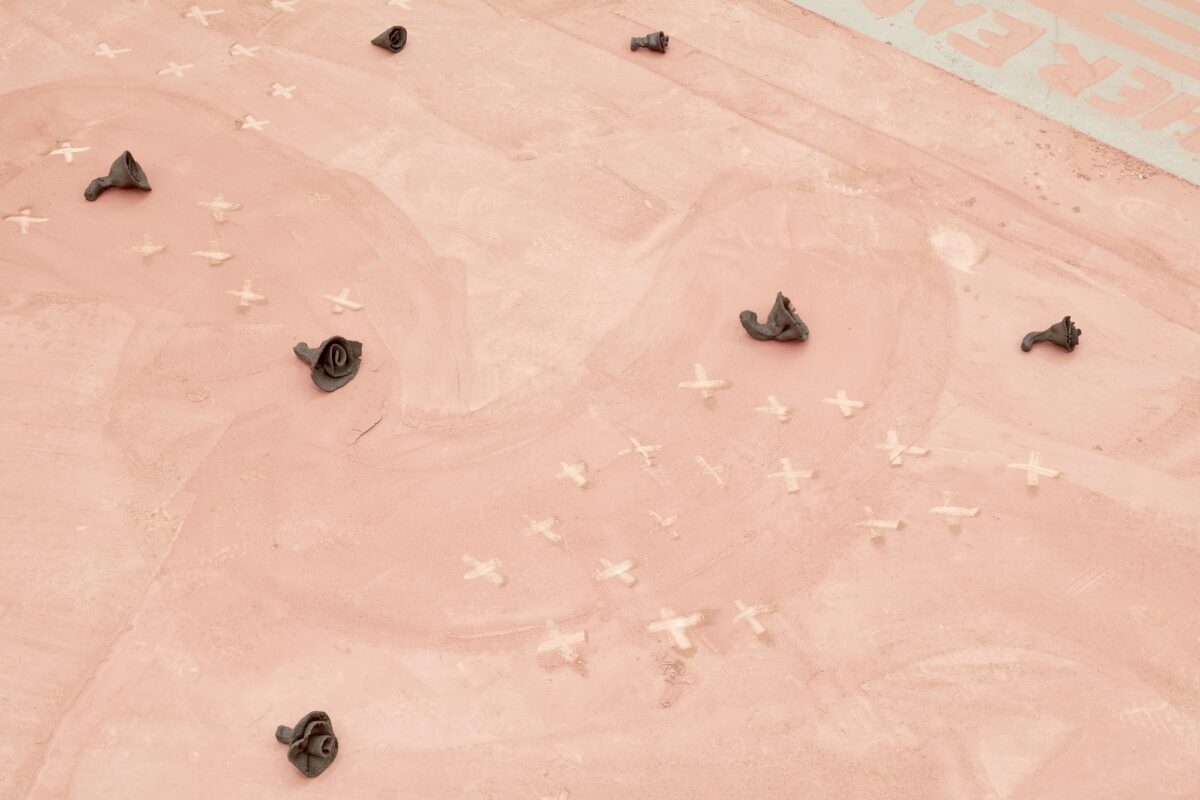
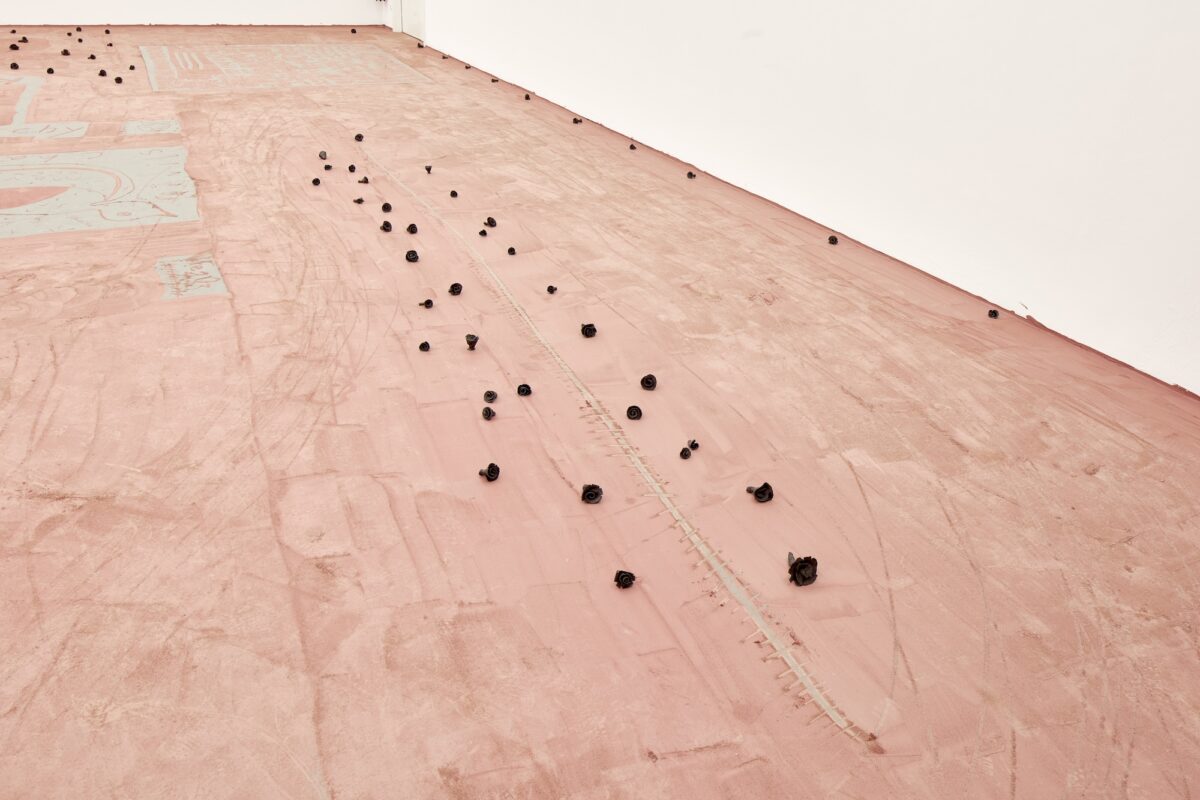
What are some consistent undercurrents in your artwork? What are some ways of working or thinking that have changed for you along the way?
It’s about twenty years since I first started studying art seriously as a 16 year old and I have been thinking a lot about that time marker recently. Love, heartbreak, anger, a questioning and intuitive approach to mark making. My studio is at the end of my nan’s garden, in a cabin I built with my dad a couple of years ago. Many generations of my family also live in the house or are constantly at the house so it is busy. And reminiscent of when I first started. When I’m stuck with something I will often ask my mum up the back to get her advice, she responds very directly without the weird art world filters. And when making the work for Hamburg she reminded me of a drawing I had made for my first project when I was 16, it was a mark making assignment and I asked my neighbor if he could get me a bike wheel for it, his dad had a sort of scrapyard and was just generally good getting hold of things…days later there was indeed a wheel left out for me and I made this drawing rolling it around, printing, painting, charcoal, text. It was so beautiful, I had it in my room for years. All to say yes. I think the same ideas are knocking around still, there are cycles of thought and like a tumbleweed dispersing ideas while moving or gathering new perspectives along the way.
I think I have always played with the sensuality of restraint too, for me that comes from having grown up with a real fear of losing my mind. Something that was reasonable because of the various situations I saw around me. And I don’t mean that in a lunatic fetish way, it’s about what it is like to have to keep your shit together – or else. That intimacy of madness has such range, terrifying, familiar sometimes soothing. This has been something that has been an ongoing concern in my approach to materials and exhibition making. The main thing that has changed is my grounding in the processes of my work, previously I had been dipping my toes in many mediums with a light touch approach to learning the basics then running with an idea, now I am investing in far greater detail with the techniques of the mediums I work within which gives me greater freedom to control the outcomes. Bringing my imagination far closer to my expression, much closer to writing or talking.
Do you see boundaries in communicating grief, despair, and hope in traditional art spaces, where large ideas can physically exist for a temporary amount of time?
Spilling your guts out in art spaces is a fools errand to some degree, but I like it. If not there, where? Many times I enjoy experiencing the work of other people’s guts even when the work is not my cup of tea, there is a liberty being taken that I appreciate, a dedication to something in their practice. The reason I reference disparately ranging emotions like hope and grief together is because they operate together in a shifting temporality. One is never truly present without the edge of the other.
Do you have a cohort of visionaries and practitioners that you lean on for support and look to for encouragement?
Yes absolutely, I wouldn’t be here without them. Jamila, Miquita, Zezi, Onyeka, Takiaya, Grace, Rudy, B.O.S.S, Ain, Elijah, Rianna, Legacy, Arianna, Lola, my family,… the list is long.
Your Jamaican heritage is a key part of your identity. How does the land and your family inform your artwork?
It is a fragment of my heart. A place where I belong and where I am a visitor. It informs every part of my life.
Have you recently discovered a way of making or do you have any upcoming projects that you would like to share?
I recently discovered how to develop my own glazes on a molecular level, as I said, something I have wanted to do since learning about the industrial chemistry background of ceramist Doyle Lane. I am at the beginning and it is brilliant.
To learn more about Phoebe Collings-James, follow them on Instagram @phoebethegorgon and visit their website at phoebecollingsjames.com.

